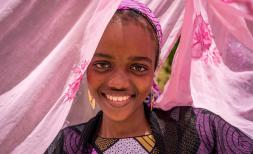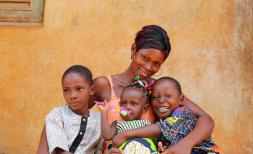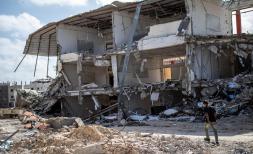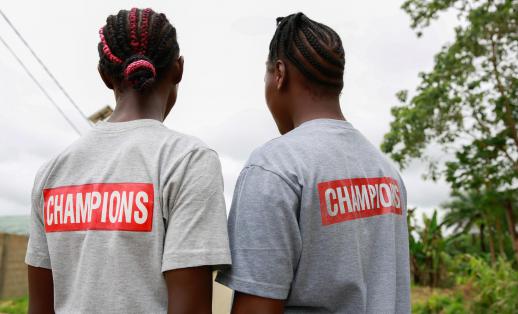African leaders must step up commitments to supporting girls’ education, especially during crises!
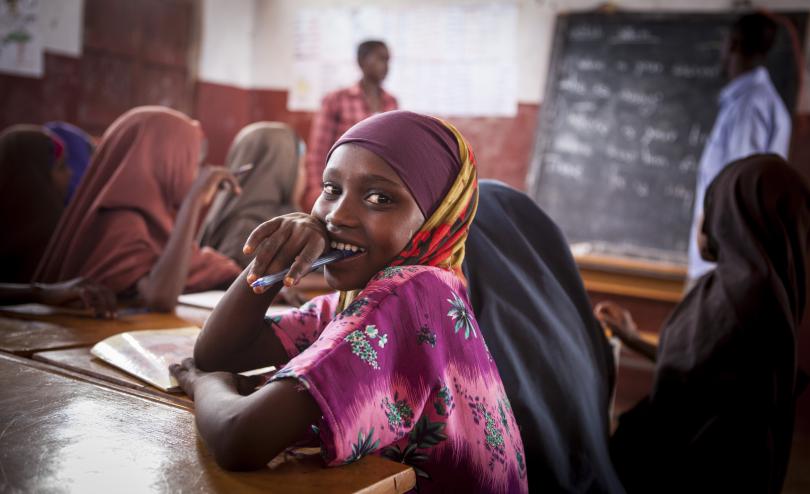
Nyakat is a 15-year-old South-Sudanese refugee girl who lives in a camp in Gambella, Ethiopia. In 2014, she fled the war in her home town Juba with her younger brother and found refuge in Kenya. In 2015, she and her brother reunited with their mother in Dawe Camp in Gambella. Save the Children invited Nyakat as a guest speaker to a High-Level Event on Education in Emergencies where she spoke about the extraordinary challenges that refugee children, especially girls, face as they pursue their right to education.
As Nyakat started her statement, the room, filled with over 100 people including education ministers high level AU officials and CSO representatives, went silent. Everyone’s attention was focused on this young girl delivering a simple but powerful message.
Nyakat described the inadequate conditions under which learning is nearly impossible. She spoke about the 150 classmates who on a daily basis fought each other to find a seat and the insufficient number of classrooms and teachers. She also talked about missing school a few days a month during her menstrual cycle
Education is a basic need in emergency situations
While her voice was frail, her message was loud and powerful. Nyakat is 15 years old. She is in 8th grade but reads like a second-grade student. For those listening to her, it could not get any more real. It was clear that as a community we have failed Nyakat, despite her thirst to learn.
Numerous studies have showed that for children, education is as important as food and shelter in humanitarian settings as it brings a sense of normality. For this reason, education should be integral to the basic package of services that refugees and internally displaced persons (IDPs) receive in emergencies. Yet the implementation of these findings hardly find their way into programs and projects in refugees and IDPs camps.
Like most children, Nyakat has big dreams. In her concluding statement, she told us she wanted to become a pilot and asked for our support.
Why are girls left behind when it comes to access to quality education?
The importance of education for girls and boys cannot be overstated. While boys’ education is universally taken for granted, some communities continue to discriminate against girls ‘education. As a result of multiple factors, more than 17.8 million girls out of 32.6 million children of primary school age were out of school in 2015 in sub-Africa.
The barriers to girls’ education include gender stereotypes, child marriage, teaching methods that disadvantage girls; lack of access to sanitary pads and private changing areas and sanitary facilities; teachers’ lower expectations for girls, especially in sciences and math; sexual harassment, abuse and violence from teachers or other school personnel, poverty, as well as crises and conflicts. Yet we know failure to invest and provide quality education to girls bring about transformational changes and positive benefits to Africa's growth and development, including dividends to peace and stability.
Girls’ education is left further behind in crises and conflict settings
These factors are exacerbated in crisis and conflict settings. An estimated 17 million girls and boys are denied education because of attacks on schools in many areas affected by conflict in Africa. Between 2009 and 2015, 910 schools were attacked and destroyed in Northern Nigeria.
Abduction and sexual violence during conflicts severely impair girls’ opportunities to learn as evidenced by the abduction of 276 schoolgirls by Boko Haram in Northern Nigeria, many of whom were raped and as a result, some have become mothers prematurely.
This of course led to low performance and increased school dropouts. Also, during conflicts, there is an increase in child marriage, which is perceived by parents as a measure to protect their girl child against atrocities as well as a coping mechanism to generate income in times of crisis.
Similarly, early pregnancy due to sexual violence against girls in conflict settings further decreases their already low chances of completing their education.
Investing in girls’ education, especially in humanitarian settings, is not optional
The benefits of investing in girls’ education are well known. In addition to contributing to the education of future generations, children of educated mothers are less likely to die before five. In Africa, a child born to a woman with no education has one chance in five of dying before the age of five. Evidence shows that primary and secondary education can significantly contribute to reducing child and maternal mortality.
Similarly, increased education of girls can not only contribute to greater girls and women’s participation in leadership positions in parliaments and boardrooms but also lead to fewer child marriages, which will typically happen later in the girls’ life cycle when they can make informed decisions about their bodies as well as bear and care for children.
To achieve SDG4 and Aspiration 6.52 of the African Union Agenda 2063 on education, it is critical to ensure that children left behind, especially refugee girls, have access to quality education. The reality is that due to limited funding, access to quality education for refugee children is too often unequal and uneven. That’s why Save the Children support the Global Partnership for Education and its call for developing country government and development partners alike to step up domestic (up to 205 or more of general government expenditure) and external financing to education, and to put resources where they are needed most. The complementary role of external financing is to leverage domestic resources, so that no child is left behind. Crisis should not mean an end to education but its continuation. The African Union Summit and moments like the GPE replenishment is an opportunity to show strong financing commitment and bold steps to ensure girls in crisis situations receive a quality education
Nyakat’s dream to become a pilot is a reminder that she will not let her refugee status determine her future. Now the question is: to what extent refugee host countries and the international community are willing to pay adequate attention to developing Nyakat’s and other refugee children skills, capacity, thought process, and expertise through empowering them with access to opportunities, relevant information, as well as quality, and affordable education? This is needed in order to fully make these children the drivers, and not just bystanders, of development in Africa.
What can AU Members States do at the AU Summit?
At the AU Summit, being held in Addis Ababa, Ethiopia from 27 June to 4 July, Member States are engaging in a general debate on Harnessing the Demographic Dividend Through Investment in youth, the annual theme for 2017.
First, as they focus on youth, it is essential to remind them that investing in young people is imperative given the current demographic structure of our continent; yet, it is not sufficient to rip the demographic dividend. Investing in children is equally important to ensure a vibrant youth.
Second, to achieve SDG4 and Agenda 2063 Aspiration 6, governments must invest in quality education of children furthest left behind, especially girls caught in humanitarian crises and conflicts.
Third, children and adolescents affected by crises must continue to learn and have access to quality education services, including secondary and tertiary education within a month of their displacement.
Finally, we call upon the international community, regional and financial institutions, the private sector and other donors to fulfil their commitments made in support of the Comprehensive Refugee Response Framework and during other global, international and bilateral events.
